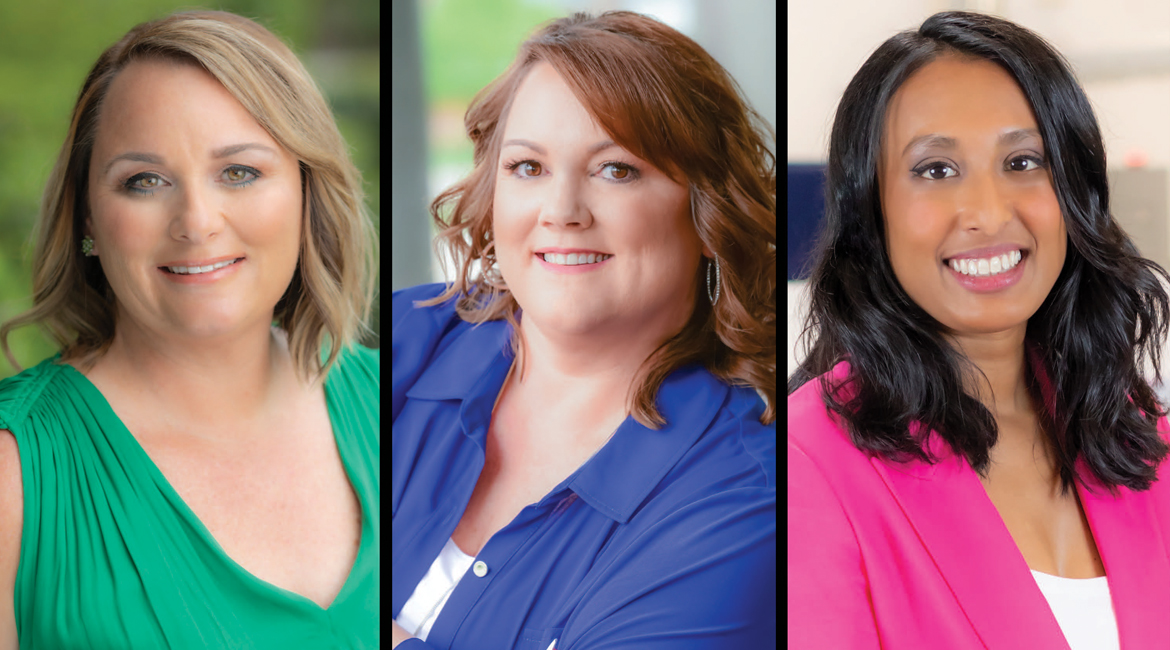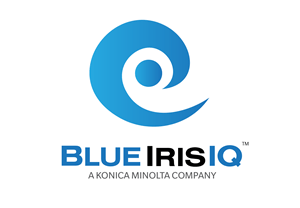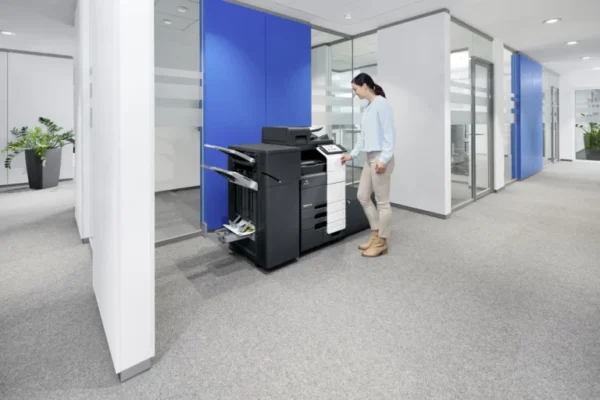The Women Influencers of 2021 lean on curiosity to propel their careers and the industry forward.
Above: Jennifer Amatucci, Tawnya Stone, Stacey Sujeebun
For many of us, as we’ve navigated our careers, we’ve been encouraged to expand our emotional intelligence and intellectual abilities through studying, learning, and work experiences to achieve success. But what about curiosity?
According to a 2014 Harvard Business Review article by Dr. Tomas Chamorro-Premuzic, professor of business psychology at Columbia University and University College London, curiosity is just as important as mental and emotional intelligence when it comes to succeeding in a complex world. Dr. Chamorro-Premuzic tells us curious people are more inquisitive and open to new experiences. They are quick to generate new, original ideas and are more likely to go against the grain. Most importantly, curious people are more tolerant of uncertainty and ambiguity, an especially important quality in today’s post-COVID world.
Our three 2021 Women Influencers agree. For Jennifer Amatucci, vice president of business development, Hytec Dealer Services; Tawnya Stone, vice president of strategic technology, GreatAmerica Financial Services; and Stacey Sujeebun, director of marketing communications, Konica Minolta Business Solutions U.S.A., curiosity plays an integral role in their own success, as well as the future of the imaging industry.
“Curiosity is integral to life,” said Sujeebun. “The world has so much to offer, and unless you look for these different experiences, you can never break boundaries. Curiosity is key to developing creativity and learning to think differently about old, tried, and true methods.”
For Sujeebun, she is constantly pushing herself out of her comfort zone to expose herself to new experiences both at work and in life. She encourages her team at Konica Minolta to think big and beyond what has already been done in the industry. Sujeebun is known for welcoming diversity of thought as she and her team plan how Konica Minolta engages its customers and employees.
GreatAmerica’s Stone uses her sense of curiosity to uncover gaps in knowledge and service, helping position herself and her team to continue propelling the company forward.
“Curiosity has been the reason I’m successful because I can’t think of a single job I would have had, had I not expressed curiosity,” said Stone. “Even going back early in my career, I was truly interested in other things happening in the business so people would bring me in. I’d notice a gap where no one was responsible for a certain thing, and they’d give it to me. In every role, I’d try to learn more and more, and I’d uncover these gaps, and then, I’d be responsible for them.”
Stone has essentially designed the course of her career by following where her curiosity has led her. Supported by equally curious leadership, she has been able to add value to GreatAmerica by broadening her perspective and being willing to rise up to bridge gaps and push the company and the industry ahead.
For Hytec Dealer Service’s Amatucci, her curiosity propels her to ask questions, all in an effort to get to the heart of a problem and to find creative solutions that can work across the imaging industry and beyond.
“Curiosity helps me to look at different areas so I can understand our customer base and determine how to bring a true solution to our dealers,” said Amatucci. “Curiosity also helps me uncover new, innovative ways to solve problems. There may be something that isn’t being offered today, and we can bring about change.”
While we may not be able to predict the future, the more we can cultivate our own curiosity, the better chance we have at succeeding. As the imaging industry continues to shift and evolve, dealers that are fostering an open, creative, diverse, and curious work environment will prove to be the most resilient and relevant to their customers.
“I want to see this industry continue to grow and flourish, and find new ways to re-invent themselves as printed copies go down,” said Amatucci. “I know these dealerships will come up with the next best thing. The pride in where we’ve come from and where we are going is bright.”
Jennifer Amatucci, vice president of business development, Hytec Dealer Services
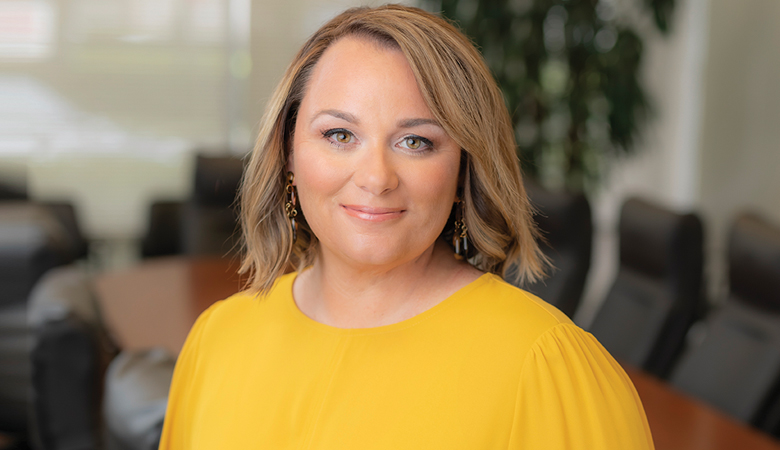
When Jennifer Amatucci considers opportunities for the company’s circuit board repair services, she keeps widening her scope. Though Hytec built its foundation within the imaging industry, Amatucci sees no boundaries in where the company can go with its services.
For the last several years, Amatucci has been leading Hytec’s efforts to expand its business footprint into other areas that rely on similar technology as the imaging industry, as well as continue to comprehensively support dealers as their businesses grow and shift in an ever-changing environment.
“It’s a lot of juggling what’s happening in the industry, where it’s moving, what’s going to be the next need,” said Amattuci.
Amatucci has spent her entire career—more than three decades—at Hytec Dealer Services. She grew up on the sidelines of the imaging industry, watching her father, Peter Brown, who rose to vice president at Delta Business Systems (eventually becoming IKON), and uncle, Daniel Turay, an owner of Hytec. To support herself through college, she worked part-time at Hytec, initially tackling more administrative roles and quickly moving on to the sales and customer service side of Hytec’s business. By 2004, her career trajectory shifted toward managing Hytec’s relationships with its manufacturers and setting up the business development side.
Today, Amatucci reaches across nearly every group within Hytec to support existing business and develop new lines of business. She supports Hytec’s OEM team in handling any new items its OEM customers are looking to develop for their dealers, and reviews how Hytec’s services affect those dealerships, as well as the quality and its on-time deliverables. On anything related to Hytec’s dealer network, Amatucci works closely with the OEMs to review those items to determine whether there are opportunities for additional programs to deploy, and then, she coordinates across Hytec to effectively deploy those programs.
Amatucci also oversees Hytec Dealer Service’s marketing, including new areas of focus, new products for the dealer community, and new industries – like the retail financial industry, where the company has been acutely focused on over the past year. She also supports Hytec’s new industry team of sales reps, helping them evaluate what programs would work operationally and how to roll them out within Hytec.
Like many senior-level executives, Amatucci’s role encompasses many different touch points across her own company and the industry it serves, and she seamlessly balances the needs of her team and her clients with shrewd time management and consistent contact.
“I’ve always encouraged my team to learn what is happening at the dealerships,” said Amatucci, who greatly respects her talented group that is reaching out to Hytec’s dealer community. “We’re not selling just an object, we have to sell solutions. To do that, we need to truly understand their processes, pain points, and challenges so we can be creative and come up with the next solution to bring to the OEMs or the dealerships.”
Since the early 1980s, Hytec Dealer Services has been servicing the imaging industry and its dealers. The company developed a solid infrastructure to support the industry and is leveraging that knowledge and expertise to expand into other focus areas.
“When we look at other industries, their technology is actually a little behind imaging products,” said Amatucci. “Imaging products do a lot; they do it quickly. There is a lot of technology-driven equipment. On circuit boards, we can be multiple years ahead of other technology even among medical and retail products.”
That gap between the imaging industry’s technology and the tech in others is exactly what Amatucci and Hytec are looking to explore. By seeking out products already out in the community with end-users touching those products and requiring field services, the company sees a ripe opportunity.
“We are looking to use the infrastructure we built with the imaging dealers and roll that model into servicing their circuit-board repair, advance exchange, inventory management, and reverse logistics,” said Amatucci.
In broadening Hytec’s client base, Amatucci believes that the company can even better serve its imaging clients.
“As we see printed copies decline, we need to use this technology and infrastructure we’ve built [at Hytec] to branch out into other industries,” said Amatucci. “That makes us stronger across the board because there’s economy of scale that we utilize with our testing equipment, all of the advancements we’ve made in 3D printing, and end-of-life parts—all of that experience we have can go across all these industries, including the imaging industry.”
One potent area that has emerged is within the retail financial area, servicing companies with field service and anything having to do with cash handling, whether it’s self-checkout, a safe and cash-handling equipment, or ATM equipment. All these items are serviced and have assembly-type swap-outs in the field.
“Just like in the copier world, the retail world wants those units to be functioning to bring their value to their end-customers,” said Amatucci, who named Nautilus Hyosung America, a leader in retail banking and ATMs, as one of Hytec’s partners. “We’re looking to set up repair and advance-exchange programming just like with the imaging industry.”
Amatucci says Hytec Dealer Services is looking to partner with companies that share the same ethics, value a customer focus, and want to develop a long-term relationship. These partnerships may not always be the cheapest, but she says they represent the best value.
A strong commitment to Hytec, its clients, and her colleagues has defined Amatucci’s career. She strongly believes in lifting others up, especially when it comes to women in the workforce.
“I think it’s important, especially being in this Woman Influencer role, to be inclusive and supportive,” said Amatucci. “As female executives, moms, friends, spouses, we want to do our best. We’re all high-achieving women, and there’s a lot of pressure we put on ourselves to always be the best in all of those roles. It’s challenging to juggle all of these roles and always want to be the best in all of those roles because at some point, you’re going to feel like you didn’t. I think it’s important to support our whole community. We need to accept that we’re not going to get everything done on our to-do list that day, but we’re still doing well. We need to support that.”
When Amatucci builds her team, she looks for people who support each other and complement each other’s skills. She encourages real relationships within her own industry and outside of it, and it’s from those relationships Amatucci has been able to continue developing her own career and support many others in the process.
“It’s important to listen and to not always think you have the answer,” Amatucci said. “It’s fun to get in, learn something, and hear feedback from others. From that, it helps you develop, grow, and expand your knowledge.”
Tawnya Stone, vice president of strategic technology, GreatAmerica Financial Services
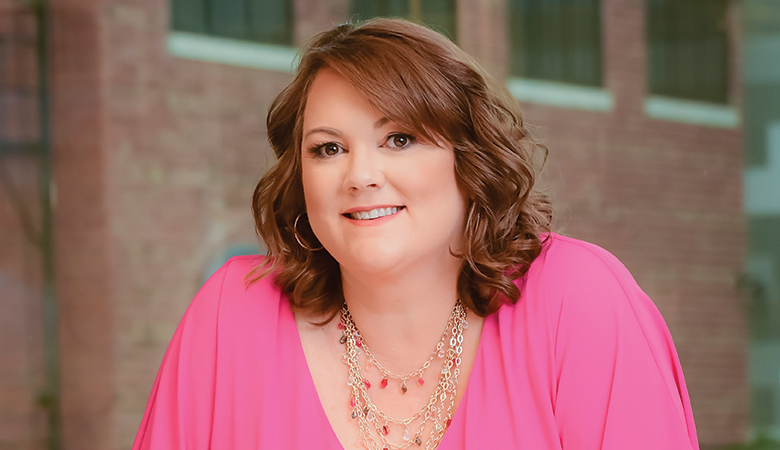
Tawnya Stone is a connector. Her unique role requires her to be the bridge between technology and business, between her company and its dealer customers. In an evolving industry and market, Stone is constantly seeking opportunities to help GreatAmerica’s customers solve their business issues while also encouraging change and innovation at GreatAmerica to better support those customers.
“What I like about my role is that you really have to have a grasp on both business and technology so you can be curious and find those dots to connect to really provide value to our customers,” said Stone. “On one side, it’s understanding what is it our dealers do in their course of business, what does their process look like, what are the systems they use, and who are the people they interact with, and on the flip side, what does GreatAmerica offer today or want to offer, or know we need to offer. I even think outside the industry: What are we able to do with consumers that we’d want to have our customers be able to do? My job is putting those two sides together and developing customer-facing tools in whatever format our customers need to better engage with us.”
Stone’s foundation is in IT, rather than a more traditional background in business. She began her professional career in the mid-1990s, working for a small Des Moines-based company developing video CDs, the precursor to DVDs, as a project manager. Philips Electronics eventually scooped up the firm, and slowly laid people off, winnowing Stone’s team from 200 people to a mere six. As one of those half-dozen people, Stone remained committed and continued to prove her value by consistently stepping up to fill in gaps to keep her department afloat.
Stone ultimately moved on from Philips Electronics and went on to work for several other companies, including Verizon Communications and two companies involved in custom home building, all while serving as the link between these companies and their customers or employees. She continued to develop her skills in business process consulting, application development, and small business operations. She focused on improving customer satisfaction, all while saving money for these businesses. In 2011, Stone joined the GreatAmerica team as an IT project manager on the billing and integration side.
At GreatAmerica, Stone continued looking for areas that needed attention within the company, and this helped her to evolve professionally. She says she never really walked into a job at the company that already had a firm, set description; she created many of her roles at GreatAmerica by identifying unique opportunities that she could address with her skillset.
“Staying in my own lane isn’t something I’m good at if there’s something I want to do and there’s a gap,” Stone told me when I first interviewed her for The Cannata Report in 2019.
As vice president of strategic technology, one of the current projects Stone is spearheading is a complete upgrade of GreatAmerica’s customer portal. While the portal has always been a strong asset to the company and its customers, Stone and her GreatAmerica team initially wanted to give the site a refresh.
“The functionality is pretty superior, especially when you look across competitors, but the portal looked a little antiquated,” said Stone. “In an age where we’re doing everything online, we’re sensitive to how things look and what the user experience is. It all comes back to what the customers’ needs are and how we meet those needs in a way that doesn’t require much training. No one needs to train you to use Amazon. You just go on and buy things. We just want the portal to be easy.”
As Stone and her team evaluated the portal to make it look sharper, they also began exploring new functionalities they’d like to include to improve its ease of use. As an example, Stone brought up auto-credit adjudication. When a customer submits a credit application, they don’t want to wait an hour to find out if the application is approved. Users are looking for that instantaneous answer, and Stone said that is exactly the type of service GreatAmerica wants to provide its customers.
That said, developing these new tools isn’t so easily accomplished. Stone works closely with GreatAmerica’s IT developers to determine whether the company’s back-end systems can support this type of functionality that they’d like their customers to have access to.
This project started with the goal of simply updating the portal’s look and feel, but it has evolved to embarking on a multiyear digital transformation of GreatAmerica’s system architecture, which involves bringing in a third party to bring it up to speed and help with this initiative.
“It’s like when you clean your house,” Stone said. “When you open a closet door, you find even more stuff to clean, more than you originally thought you needed to clean. That’s about where we’re at right now. So, we’re at the point where we are asking how can we do this in a way that provides value to our customers right away. It’s been a challenge, but an exciting one to try to figure out how we are going to meet as many needs as we can at once without waiting three years.”
In brainstorming ways to re-create this customer portal, Stone says GreatAmerica is thinking more like Main Street’s consumers. They’re looking at IT-functionality that consumers take for granted in their personal lives but aren’t a given in a professional environment.
“I can take a picture of a check and deposit it into my bank account,” said Stone. “How does that translate in our world? I can Venmo money to a friend. While we’re not going to Venmo money, you can see the ease of access that we’re looking to achieve. All these things we’re used to doing all day, every day in our consumer lives, how do we give the same experience to our customers in their B2B lives?”
This portal transformation now has one specific goal: To make it easier for customers to do business with GreatAmerica and provide even more value to the dealers.
Stone spends much of her time developing an intimate knowledge of how GreatAmerica’s customers work. With that understanding, she looks to layer on technology to help dealers alleviate their pain points.
“Customers are asking us to help them solve business problems,” said Stone. “They don’t want to have a report or data thrown at them. They want something that will help them make decisions. We don’t want to just run reports. We want to be able to say, here is where you should be focusing and why. We want to put intelligence around our data so the dealers don’t have to make decisions by looking at spreadsheets. We want to help lead them to the decisions they need to make.”
And then, there is the cost and return on investment, which is the sweet spot between developing new technology and keeping a successful business, well, successful.
“Anything is possible, but if it costs $10 million in 10 years, that’s not possible in my mind,” said Stone. “I think it’s important to have the ability to discern whether something is a low or high level of effort and equate what the ROI is around it. If something is a high level of effort but a low ROI, we’re not going to go after that. We’re not going to waste IT’s time to put that together for us. Understand what’s possible, what is the order of magnitude, and decide whether it’s worth it, and move forward, or figure something else out.”
Stacey Sujeebun, director of marketing communications, Konica Minolta Business Solutions U.S.A.

Stacey Sujeebun is looking forward. Rather than relying solely on tried and tested marketing strategies, she wants to shake things up by delivering memorable experiences to showcase and differentiate Konica Minolta’s products and services in an ever-increasingly crowded marketplace. And it’s working.
“Print is just so exciting,” said Sujeebun. “The creativity that you can really push through with it is amazing. When you even think of the value of print in the COVID era, yes, we are printing less in the office, but production print is becoming more integral. We’re shopping less in person and more online. The role that print has is really intrinsic to a brand experience.”
Sujeebun joined the Konica Minolta team as a marketing specialist in the U.K. in 2011 after working for several years in the agency arena with various brands and industries on temporal projects. In 2014, Sujeebun joined Konica Minolta’s innovation team, at that time known as the Workplace Hub group, which was born out of the Business Innovation Center in Europe. In this role, Sujeebun was asked to employ her creative, out-of-the-box thinking to develop a program to create a new brand intended to reposition Konica Minolta and make way for the company to roll out an innovative, disruptive product, Workplace Hub.
In March 2017, after several years of research, development, and testing, Sujeebun and her team of highly talented IT developers rolled out the Workplace Hub platform to positive reviews. As the sole marketing specialist working on this intense project, her efforts caught the eyes and ears of many members of Konica Minolta’s executive team.
By May 2017, she had packed her bags and set her sights on the U.S., landing in New York to oversee marketing for Konica Minolta’s digital workplace, including Workplace Hub, and North America division, as well as the company’s global research and development group. She currently reports to 2015 Women Influencer Kay Fernandez, global digital transformation (DX) branding and senior vice president, marketing.
Her arrival in New York provided a flood of new experiences and inspiration for Sujeebun. With an open mind and fresh eyes, she immersed herself into her new city’s experiences, taking advantage of the playground that is New York City. Museum visits, theater shows, dinners, and even being stuck in traffic looking at billboards became inspiration for potential marketing ideas.
However, one particular experience planted the seed for one of Sujeebun’s most well-received and successful projects to date: Konica Minolta’s immersive booth experience at PRINTING United in 2019. She attended a New York City production of Sleep No More, a fully immersive theater experience that turns the traditional experience of sitting in a seat for up to three hours simply consuming what’s being offered on the stage upside down. In Sleep No More the audience walks from room to room in a five-story building at their own pace, using all their senses—touching, smelling, feeling, hearing—interacts with props, and witnesses actors in various scenarios delivering snapshots of the story based on William Shakespeare’s Macbeth.
“I wanted to take that sensory experience I had at Sleep No More that was so impactful to me and use it in our industry,” said Sujeebun. “It was a huge catalyst and changing point for me. I realized there are ways you can reflect the different senses through the events we do. At PRINTING United, we tried to re-create the Main Street experience built around a tactile print experience.”
For Sujeebun, printers are creative people and designers first, and the machines are what brings their innovative visions to life. Despite receiving some pushback about her ideas for an immersive experience, Sujeebun remained committed to her core idea and convinced the Konica Minolta team to take a calculated risk in executing a new strategy to reach its customers. While her original idea was much more experiential, Sujeebun worked closely with her team to find common ground, buy-in, and cooperation with Konica Minolta’s executives to land on a powerful presentation.
“You forget in the print industry because we talk about click-throughs and run-rates, but then when you think about being a consumer, the experience of receiving a package and opening the product—you don’t realize it, but that is all a print experience,” said Sujeebun. “That is something OEMs know about, but they don’t play it up enough about the role that print has in brand experiences.”
Ultimately, when PRINTING United attendees walked through Konica Minolta’s exhibit, they saw the machines, but they also saw the big signage that comes from the company’s wide-format machines. The booth also exhibited real-life scenarios such as a bakery storefront with packages for macaroons and a bookstore featuring magazine covers—all printed by Konica Minolta’s machines. Konica Minolta representatives welcomed attendees into the booth to have an immersive print experience, allowing them to touch and play with all the samples available.
The results were staggering. Konica Minolta had anticipated bringing in $9 million in sales from the event. Instead, the company sold $17 million, well over the expected return on investment.
“We were trying to push through the usefulness, the creativity, that evergreen need around print,” said Sujeebun. “Yes, our machines were there, and they were a very important part of it, but we tried to talk about all those different elements around print that are emotive. We really did something transformative.”
Spearheading Konica Minolta’s trade show efforts is only one of Sujeebun’s many responsibilities. She also leads a team of creative, dedicated people who drive the company’s plans for corporate events, brand communications, and corporate communications, which includes both public relations and internal communications. All of the initiatives Sujeebun spearheads focus acutely on creativity and return on investment. She encourages her team to strive for their goals and execute them to the best of their abilities to help make Konica Minolta the best of the best. However, she is also committed to their personal wellbeing.
“For me, leadership is much more about empathy and recognizing your team as human beings,” said Sujeebun.
Especially over the past year, as her team shifted to working remotely, Sujeebun emphasized the balance between her team’s personal and professional lives. She connected with them individually and through group meetings, not only to make sure they were staying motivated and challenged in their jobs but also to find out how they were getting along in life as they sheltered in place. To guide her, Sujeebun works closely with her mentor and manager, Fernandez, listening and learning from her.
“Kay recently received an award, and in her acceptance speech, she spoke of the importance of authenticity,” said Sujeebun. “Yourself and your own personal authenticity are important to bring with you wherever you are.”
This is a truly personal journey for Sujeebun. She is an immigrant here in the U.S., and back in the U.K., she is the daughter of an immigrant.
“For me, trying to understand my identity and figure out where I fit in and where I don’t fit in has been a very difficult journey, especially through my teenage years,” said Sujeebun. “Even understanding the color of my skin and how that fits into things was hugely challenging as an individual. What I’ve had to recognize as a daughter of an immigrant, and an immigrant myself, is that there are things and experiences I just don’t understand. You have to accept who you are, know who you are, what you believe in and stand for, even if it goes against whatever everyone believes.”
Sujeebun wants her team to bring their authentic selves to the office, so they can all hear each other’s opinions and thoughts, and the more varied they are, the better.
“You can only embrace difference if you’re really authentic to yourself and you’re O.K. going against the flow,” said Sujeebun. “I hope my team sees this. If we start to put restrictions around who we are at work, we’ll never get the best out of people.”
Access Related Content
To become a subscriber, visit www.thecannatareport.com/register or contact cjcannata@cannatareport.com directly. Bulk subscription rates are also available.

